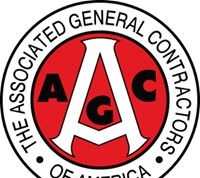State Foreclosure Prevention Group Produces Report On Mortgage Loss Mitigation
WASHINGTON, D.C. — The State Foreclosure Prevention Working Group, a multi-state task force organized last summer by Iowa Attorney General Tom Miller to work with subprime mortgage loan servicers to reduce the number of unnecessary foreclosures by encouraging loan modifications and other sustainable, long-term solutions, released its first subprime mortgage servicing performance data report on Thursday.
The report, which summarizes data from a group of the largest mortgage servicers through October, outlined five key findings, as follows:
- Seven out of ten seriously delinquent borrowers are not on track for any loss mitigation option. The lack of interaction between mortgage servicers and homeowners remains a major problem. While servicers have developed creative outreach efforts and increased staffing, the data shows a large gap between the number of homeowners needing loss mitigation and the number currently receiving assistance. Our data suggests that a rising number of loan delinquencies are outpacing the increase in loss mitigation efforts.
- Servicers have increased their use of loan modifications and other home retention options. For those delinquent homeowners in contact with servicers, almost half (45%) are working toward a loan modification. Servicers are increasing their use of longer-term changes to the mortgage loan versus their earlier reliance on short-term repayment or forbearance agreements.
- Payment resets on hybrid ARMs have not yet been a driving force in foreclosures. A significant percentage of subprime adjustable rate loans are delinquent before they experience payment shock from their first adjustment, reflecting weak underwriting or fraud in the origination of the loan. With so many homeowners struggling to stay afloat prior to rate resets, we need to act quickly to address these hybrid ARM loans before the payment shock due to the rate reset triggers further foreclosures.
- Homeowners are helping themselves. Most delinquent loans resolved in October 2007 occurred due to the homeowner catching up on back payments. As of October, actions by homeowners, not servicers, have prevented the most foreclosures. This, however, may be a temporary development.
- The refinance option has nearly evaporated. Historically, serial refinancing was the primary way that the mortgage industry and homeowners managed delinquencies in subprime loans. Despite recent interest rate cuts, the mortgage industry will not be able to refinance its way out of this crisis absent dramatic changes in available loan products or a reversal in home price declines.
The Group, made up of state attorneys general and state banking regulators, collaborated with industry and federal regulators to develop a uniform data reporting format to collect comparative data to measure the extent of the foreclosure problem and the servicers’ efforts to respond to it. Consistent and objective data is necessary to make informed policy decisions and to promote initiatives that could reduce foreclosures.
Thirteen of the top 20 servicers provided the requested data for the month of October 2007. These servicers represent approximately 58% of the total subprime servicing market. Reporting companies serviced 5,110,678 subprime and Alt-A loans. The Group, while emphasizing that the data collection initiative is a voluntary and cooperative effort, continues to seek cooperation from the servicers that did not participate in the initial report.
Overall, over 150,000 delinquent loans were in the process of receiving a loan modification or other home retention accommodation at the end of October.
The State Working Group anticipates future reporting on the data collected from servicers. The State Working Group will continue to collect monthly data from reporting servicers in order to provide public information on trends in the servicing industry as we move through this foreclosure crisis.
As this first report was going to press, the State Working Group had collected data for November 2007 servicing activity. A preliminary review of that data suggests that subprime delinquency rates continued to rise in November.
The Group calls for systematic, long-term solutions to efficiently deal with subprime loans originated in recent years.
To access the October report, go to http://www.csbs.org/Content/NavigationMenu/Home/StateForeclosurePreventionWorkGroupDataReport.pdf
# # #
About the State Foreclosure Working Group
The State Foreclosure Working Group comprises representatives of the Attorneys General of 11 states (Arizona, California, Colorado, Iowa, Illinois, Massachusetts, Michigan, New York, North Carolina, Ohio and Texas), two state banking departments (New York and North Carolina), and the Conference of State Bank Supervisors. The Group was formed in the summer of 2007 to work with servicers of subprime mortgage loans to identify ways to work together to prevent unnecessary foreclosures.
















